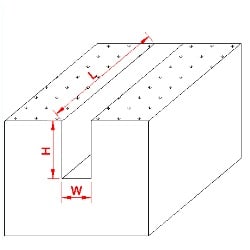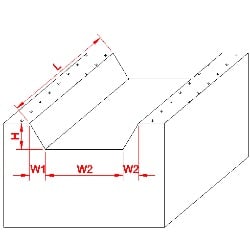
Limited Time Offer: Enjoy 10% Off All Services
Get a quote now – this discount won’t last long!
We show you how to calculate the true value of excavation when digging earthworks projects.
Article By: Tom Ayre | Last Update: November 2020
Calculating bulking factors are an important element in earthworks / excavations projects big and small.
Having removed a small amount of earth in my garden I was surprised at how much volume the soil bulked out to. I had to hire a grab lorry as the volume would have been too much for a skip! When working on a large earth moving project it is even more critical to calculate this correctly.
Fun fact, the deepest hole ever dug was 7.5 miles into the earth, that’s a lot of soil!
Knowing the volume of material after an excavation has taken place is important because:
In this blog article I will explain how bulking factors work, how to calculate by hand and give you a free to use calculator tool that will help with:
Let’s get started!
THS Concepts offers surveying services for a variety of projects throughout London, the UK, and globally.
How can we help on your project?
A bulking factor is a number that is multiplied by the volume of material to get a true reflection of the uncompacted volume.
Having removed a small amount of earth in my garden I was surprised at how much volume the soil bulked out to. I had to hire a grab lorry as the volume would have been too much for a skip! When working on a large earth moving project it is even more critical to calculate this correctly.
To use a bulking factor number you have to multiply the bulking factor number by the excavated volume size.
For instance, a bulking factor for Clay and Gravel is typically 1.15
If your excavation was 15 m3.
Your volume size would be 1.15 x 15 = 17.25 m3
You must consider the bulking factor of the material you are digging to ensure you correctly plan for the removal costs and time to do it in.
Each material that you excavate will have different properties in terms of how easy they are to dig.
The most common way of categorising a soils digability or ease of digging is:
In our calculator below, you will see the materials digability using the “E”, “M”, “M-H”,”H” format.
Use this tool to:
When calculating your volume size you will need accurate measurements. Depending on the size of the project it might be worth hiring a topographical survey company to measure the area / volume precisely.
Rectangular Excavation
Volume = W x H X L
Example = 1.5 x 2 x 8
= 24 m3

Cutting Excavation
Volume = ((H * W1) / 2) + (W2 * H) + ((H * W2) / 2)) * L
Example = ((0.5 * 0.3) / 2) + (1.5 * 0.5) + ((0.5 * 0.3) / 2)) * 2.1
= 1.89 m3

For more complicated volumes, use an online calculator such as the one here.
92 Bellhouse Lane, Leigh-on-Sea, Southend-On-Sea, Essex, SS9 4PQ
76 Quill Street, Finsbury Park, London, N4 2AD
THS Concepts has a passionate team of surveyors and CAD draughtsman delivering detailed, thorough and accurate surveys and CAD drawings. We are far more than just a land and building surveying company.
Terms & Conditions | XML Sitemap | Copyright 2022 – THS Concepts LTD